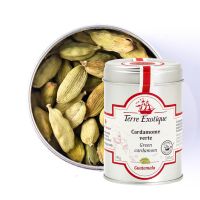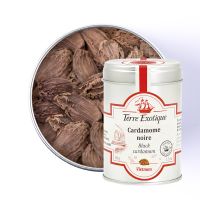THE HEART OF INDIA
Cardamom

In the kingdom of spices, pepper is the King and cardamom is the Queen; a crown bestowed on the spice back in Ancient times due to its rich aromas and therapeutic virtues. Cardamom comes from the same botanic family as turmeric and ginger and is an essential ingredient of all Indian masalas (spice mixes), with its rich flavours and is also widely used for its medicinal properties. Elettaria cardamomum otherwise known as green cardamom, is the most widely used variety in Europe. Brown cardamom is not as well-known but is widely used in India and throughout southern Asia. From the Himalayas in Nepal to the Cardamom hills in Kerala in Southern India, we shall take you on a journey to (re)discover these tiny pods bursting with flavour.
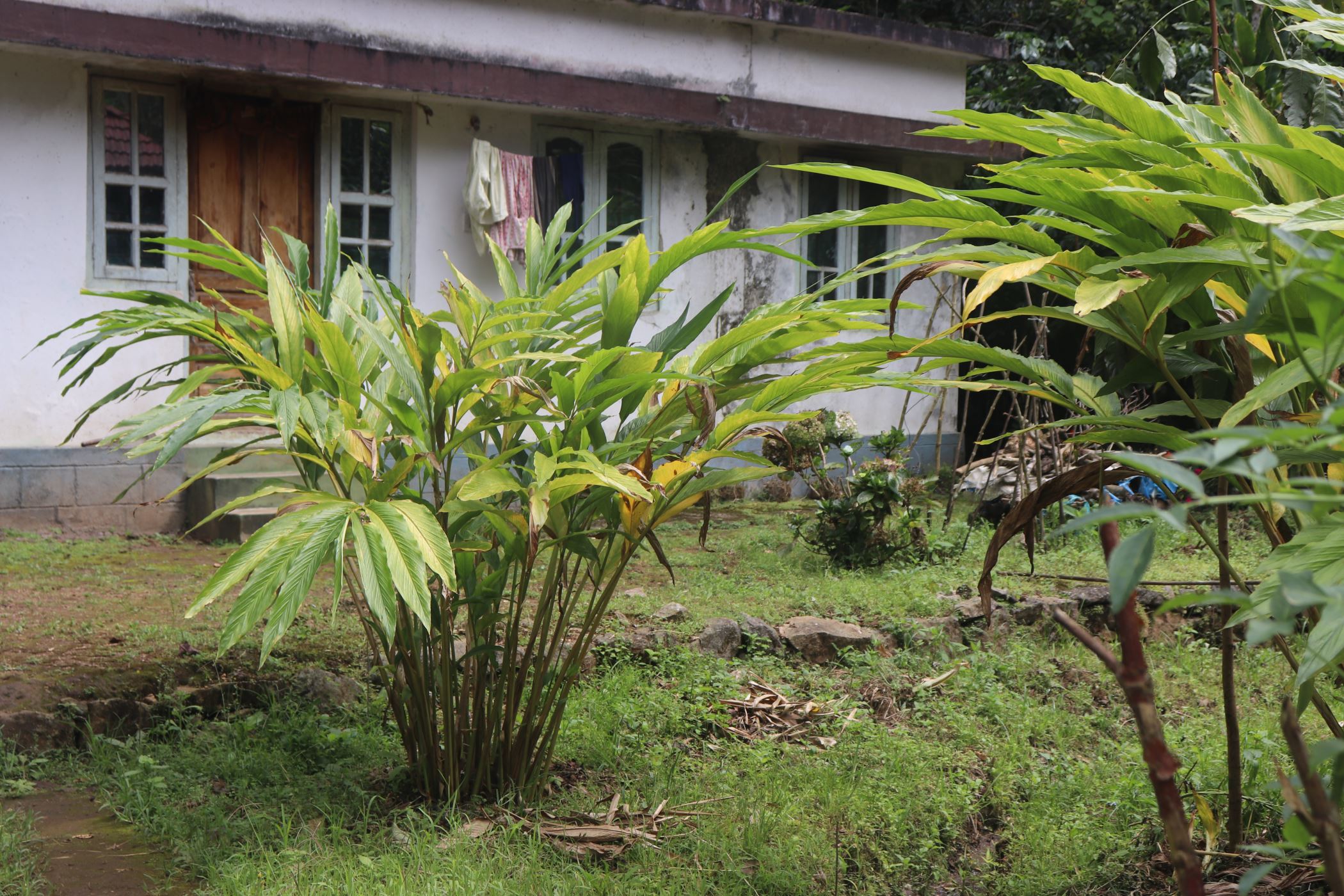

Cardamom is a rhizome plant from the Zingiberaceae botanical family. To reach its full height of 3 metres, the plant needs humidity, shade and heat. The plant only flourishes at temperatures above 30-35°C, the roots need to be near water and the plant needs shade for at least half the day. These climatic conditions can be found in the mountainous regions of South-East Asia where cardamom grows naturally. The slopes of the hills and mountains let the plant absorb the water it needs whilst the tall trees of these semi-tropical zones provide the necessary shade.
These small pods full of flavour, aromas and therapeutic properties grow at the foot of the plant. The pods are ripe once the seeds turn black. So, the pods need to be harvested before the pod bursts open releasing these seeds.

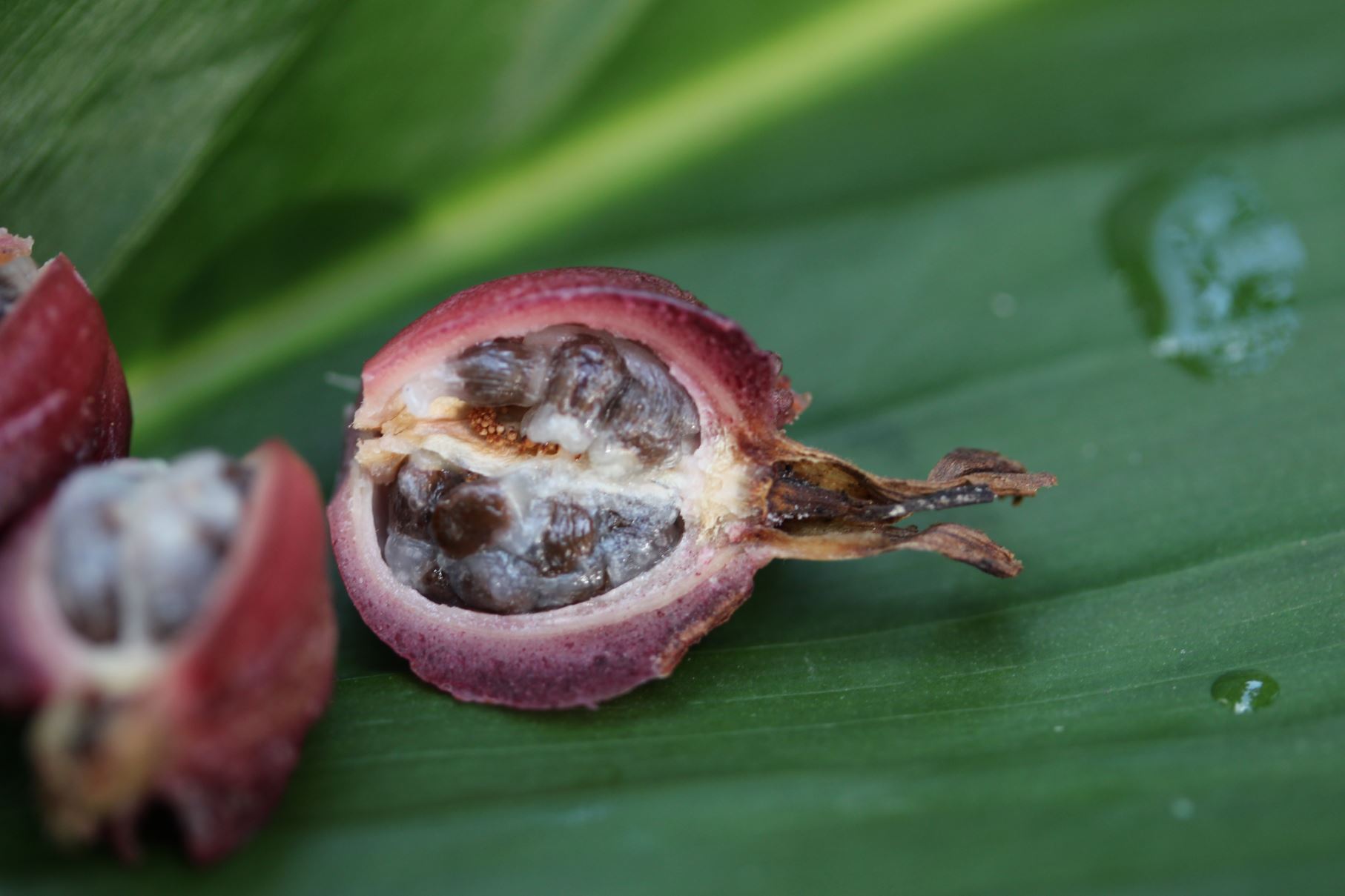

Green cardamom–powerful flavours
Elettaria Cardamomum is from the Malabar coast in Southern India. It releases powerful flavours of lemon and camphor with a peppery hint. Green cardamom is mainly grown in the hot, humid climates of South-East Asia, and namely in the Cardamom hills in Southern India, where Abraham showed us round his plantation.
In this region, green cardamom is harvested about every 6 weeks all year round except between March and June. The plant lives for around 10 - 12 years. To keep the plant healthy, and protect it from insects the dead, dry leaves are continuously removed.
There are several varieties of Elettaria Cardamomum with different properties: pitivu survives well despite exposure to the sun and requires less water than the nealaini variety, but its pods are smaller and only ripen every 10 - 12 weeks.

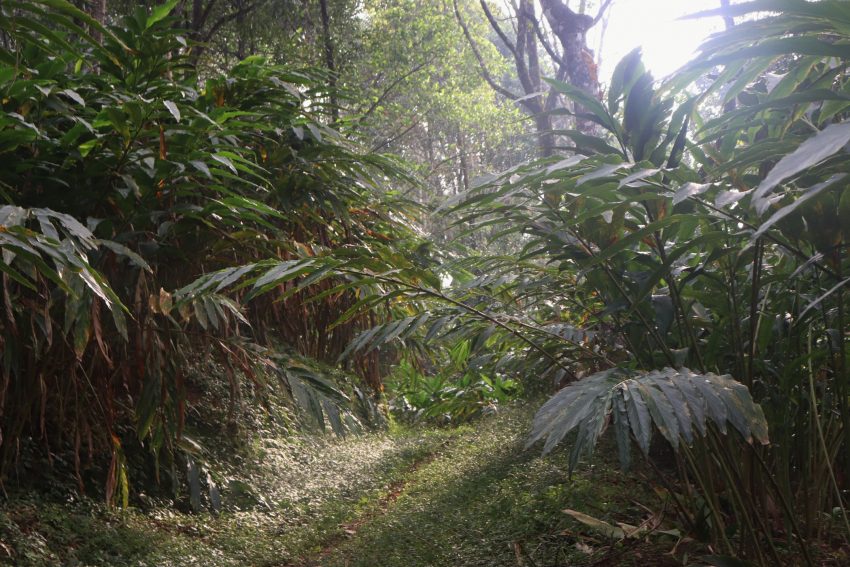

Black and Purple Cardamom – Two spices in one
Brown cardamom, or Amomum Subulatum, comes from Northern Indian, in the Himalayas. Although its pods are bigger, its flavours are less complex and not as strong as green cardamom. Depending on the drying technique used, brown cardamom can become:
- black cardamom when wood dried producing mild and smoked aromas.
- purple cardamom when left to dry in the sun releasing notes of menthol.
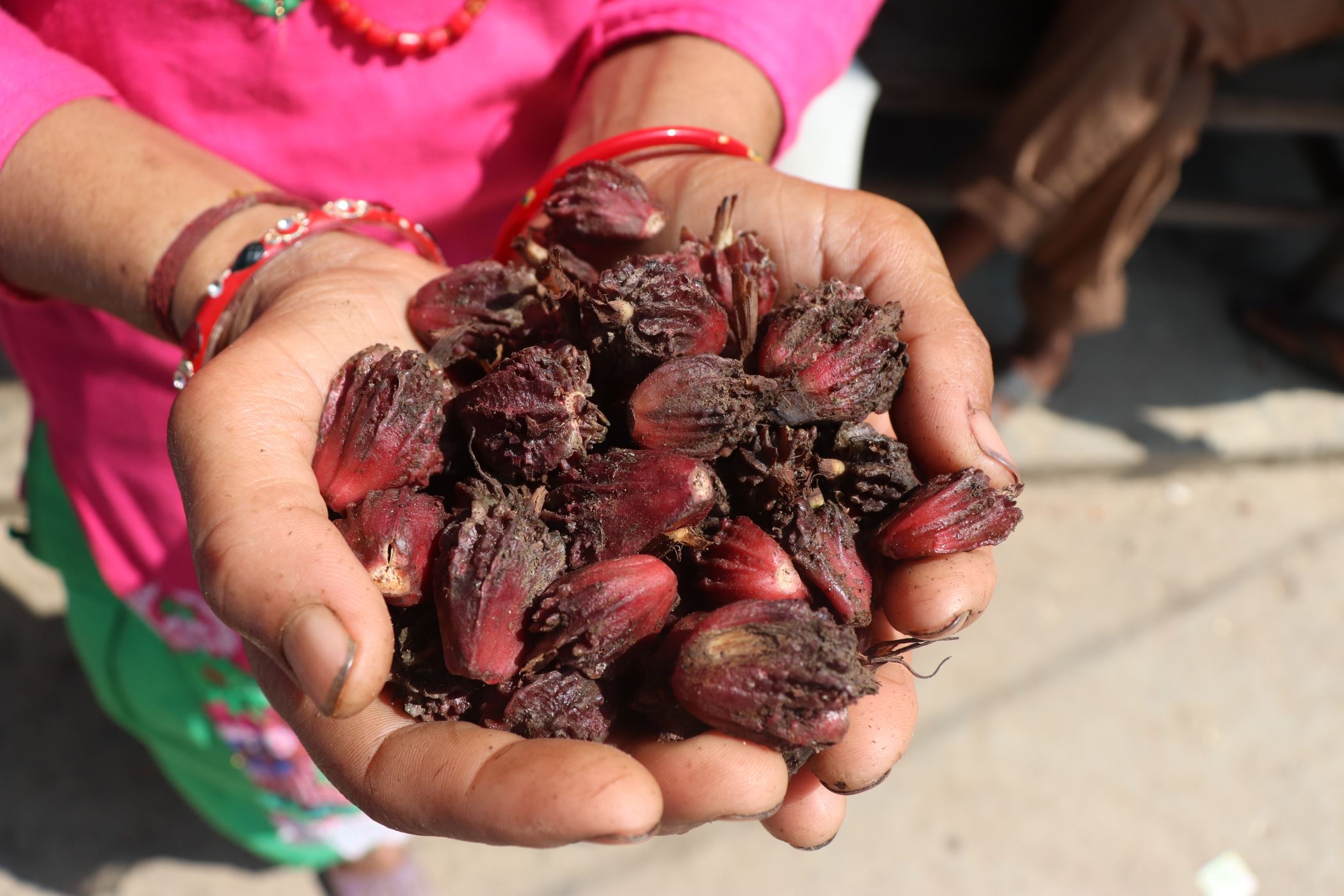

It is much quicker to dry cardamom pods on a wood fire than in the sun which means that black cardamom is more widely exported than purple cardamom. This is probably why purple cardamom is very rare in Europe.

A myriad of uses
Cardamom was highly valued in Ancient times by the Egyptians, Greeks and Romans, renowned for relieving coughs, sore throats, preventing caries and even getting rid of intestinal worms! It was mixed with wax and used as toothpaste. At that time, cardamom was already used in cooking in India where its therapeutic virtues were also greatly valued. Over time, it became more widely used in cooking, now used throughout the world. In India, green cardamom is used everywhere, in masalas, chai (Indian tea) and in a plenty of desserts and sweets. In the Middle East, it is used in desserts for example in orange cake, or in coffee not only adding depth and a delicious aftertaste, but also counteracting the stimulating effects of caffeine. In Europe, cardamom is widely used in herbal teas and gingerbread. In Scandinavia it is used in cakes to replace cinnamon. In tea, coffee, citrus fruit salads, stew-like dishes, vegetables, desserts and sweets, green cardamom can be used everywhere. Brown cardamom, although not as widely used as its green counterpart in the rest of the world, is greatly appreciated in Asia where it is used whole in dishes to intensify the flavours. Traditionally in Nepal, brown cardamom pods are given out after a meal for guests to chew on to help digestion. Particularly useful in countries where salt and chilli pepper sometimes get mixed up! It is widely used like its green cousin and especially with red meat, use 1-2 pods to enhance your stews. Cardamom’s therapeutic properties are far reaching; it is used as a remedy for infections (urinary, stomach or mouth). It also contains lots of protein and vitamins making this spice the perfect anti-depressant, antioxidant or simply used as a detox. This spice is also renowned for relieving digestive problems or for preventing colds and flu.

Warm up in winter with these tasty cardamom cookies!
Cardamom cookies– makes about 30 cookies
Ingredients for the cookies:
- 200 g melted butter
- 120 g sugar (3/4 cup)
- 280 g flour (2 cups)
- 1/2 teaspoon yeast
- 1 egg
- 1 teaspoon vanilla extract
- 2 teaspoons cardamom
- 2 teaspoons ginger
- 1 tablespoon lemon juice
- 1/4 teaspoon salt
- 50 g sugar for rolling the biscuits in
Ingredients for the filling:
- 1/2 bar of chocolate
- 2 spoons cream
- 1 small lump butter
Utensils:
- 1 electric mixer
- 1 bowl and 1 spoon
- 1 baking tray, baking parchment
- 1 spatula
Method:
- Mix all the ingredients with the mixer then place in the fridge for 1 hour
- Preheat the oven to 180°C
- Using a spoon and your hands, make small balls with the cookie dough. Roll in caster sugar. Flatten out the balls (about 5 cm in diameter x 1/2 cm thick)
- Place on a buttered and floured baking tray or on baking parchment leaving some space between the cookies
- Bake for 10 - 12 minutes until golden brown
- Meanwhile prepare the cream: melt the chocolate in the microwave with 1 teaspoon of water. Mix thoroughly to obtain a smooth cream. Add the cream and butter
- Remove the cookies from the baking tray with a spatula and leave to cool on a rack
- Once the cookies have cooled down, dip them in the chocolate or dribble them with the melted chocolate to decorate.

 Français
Français 
